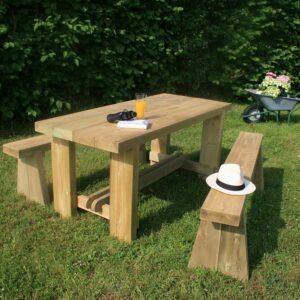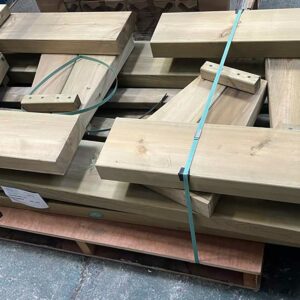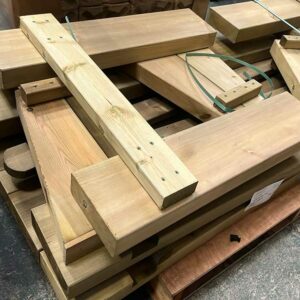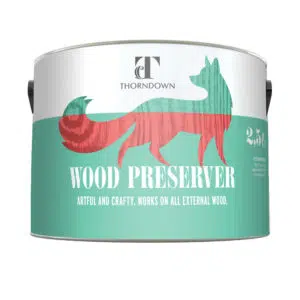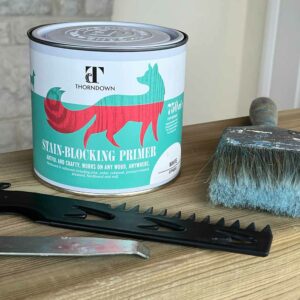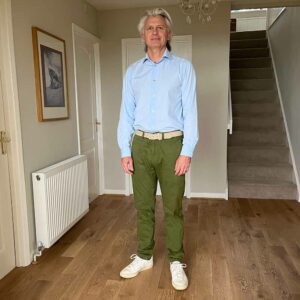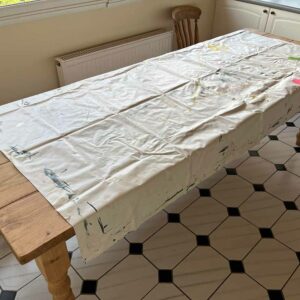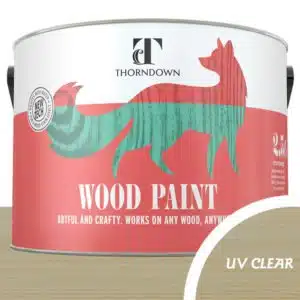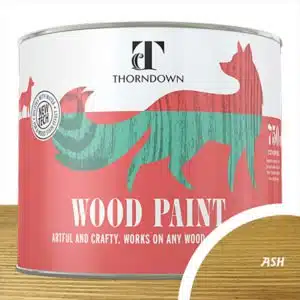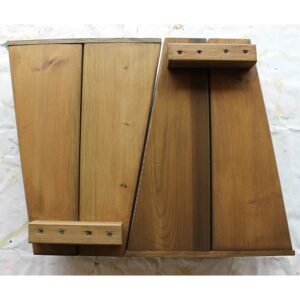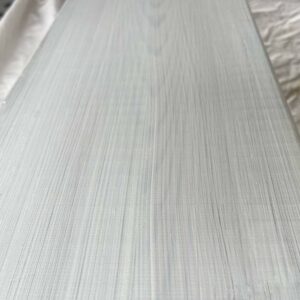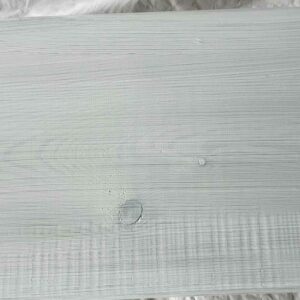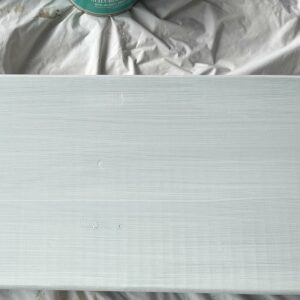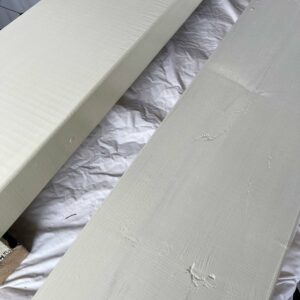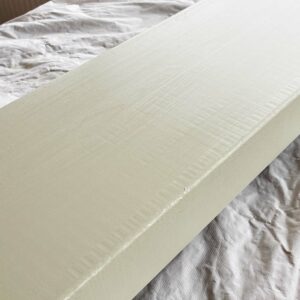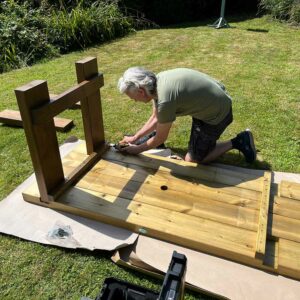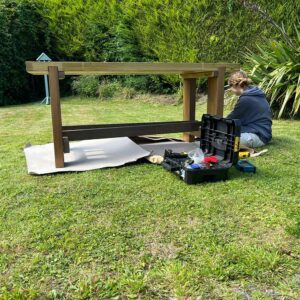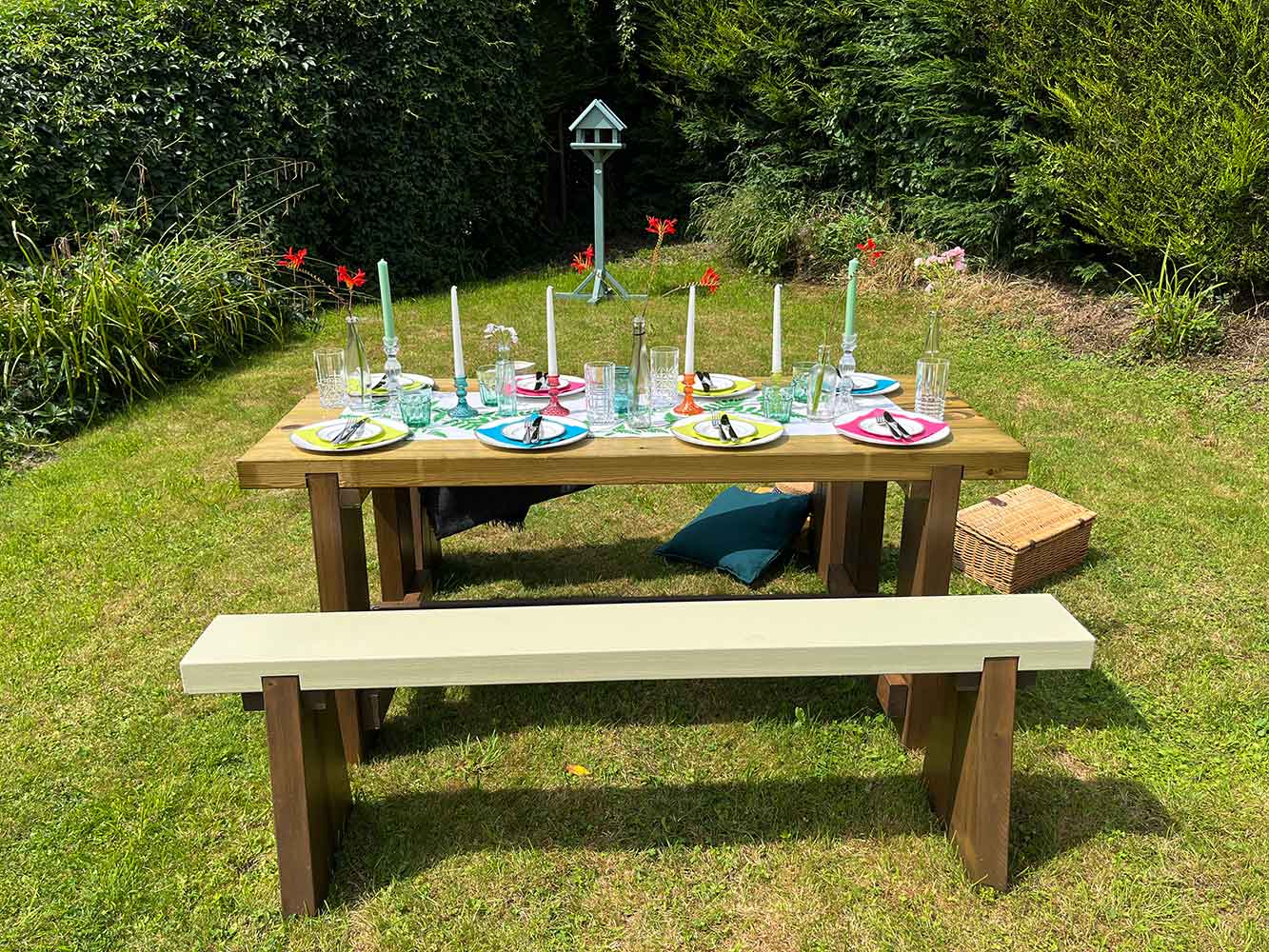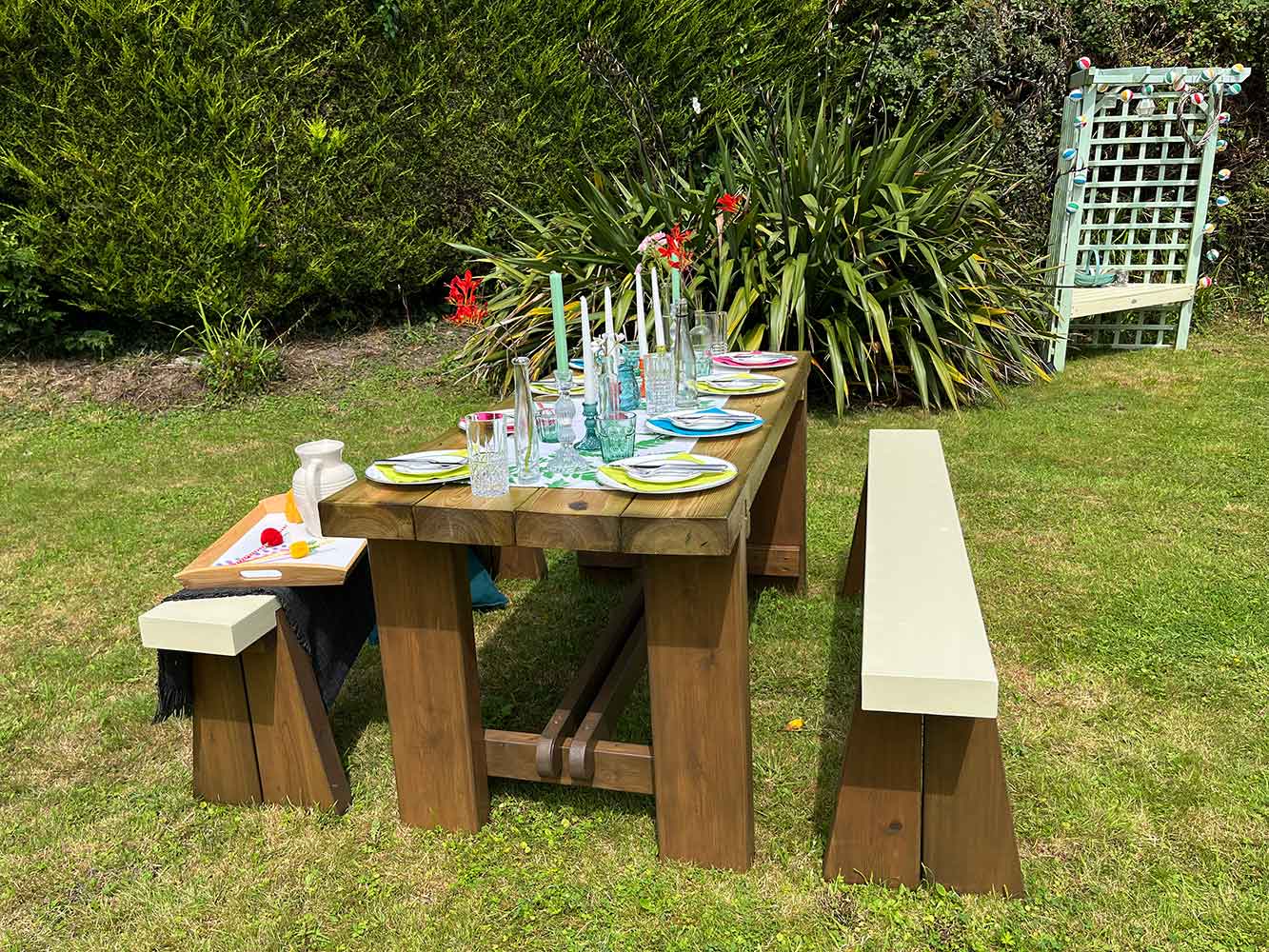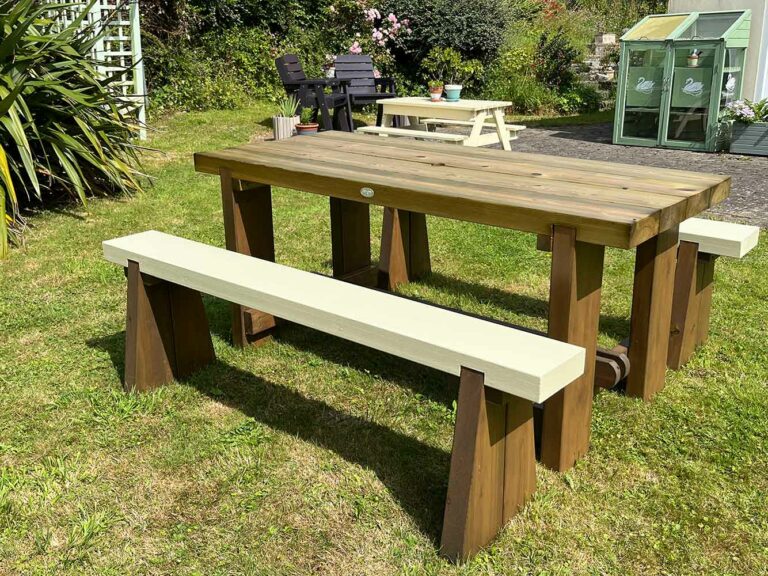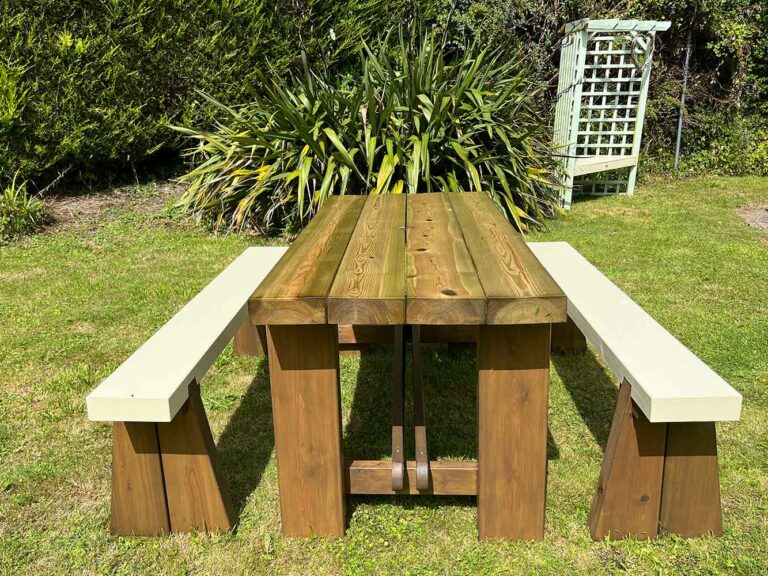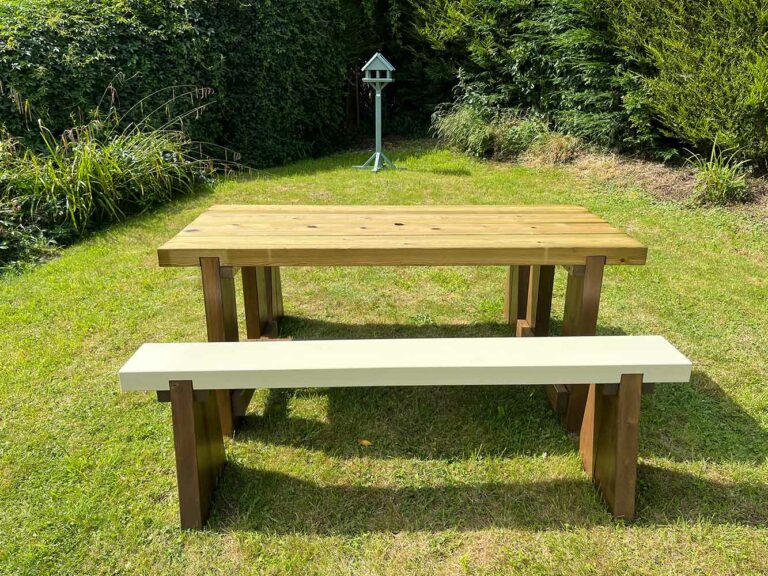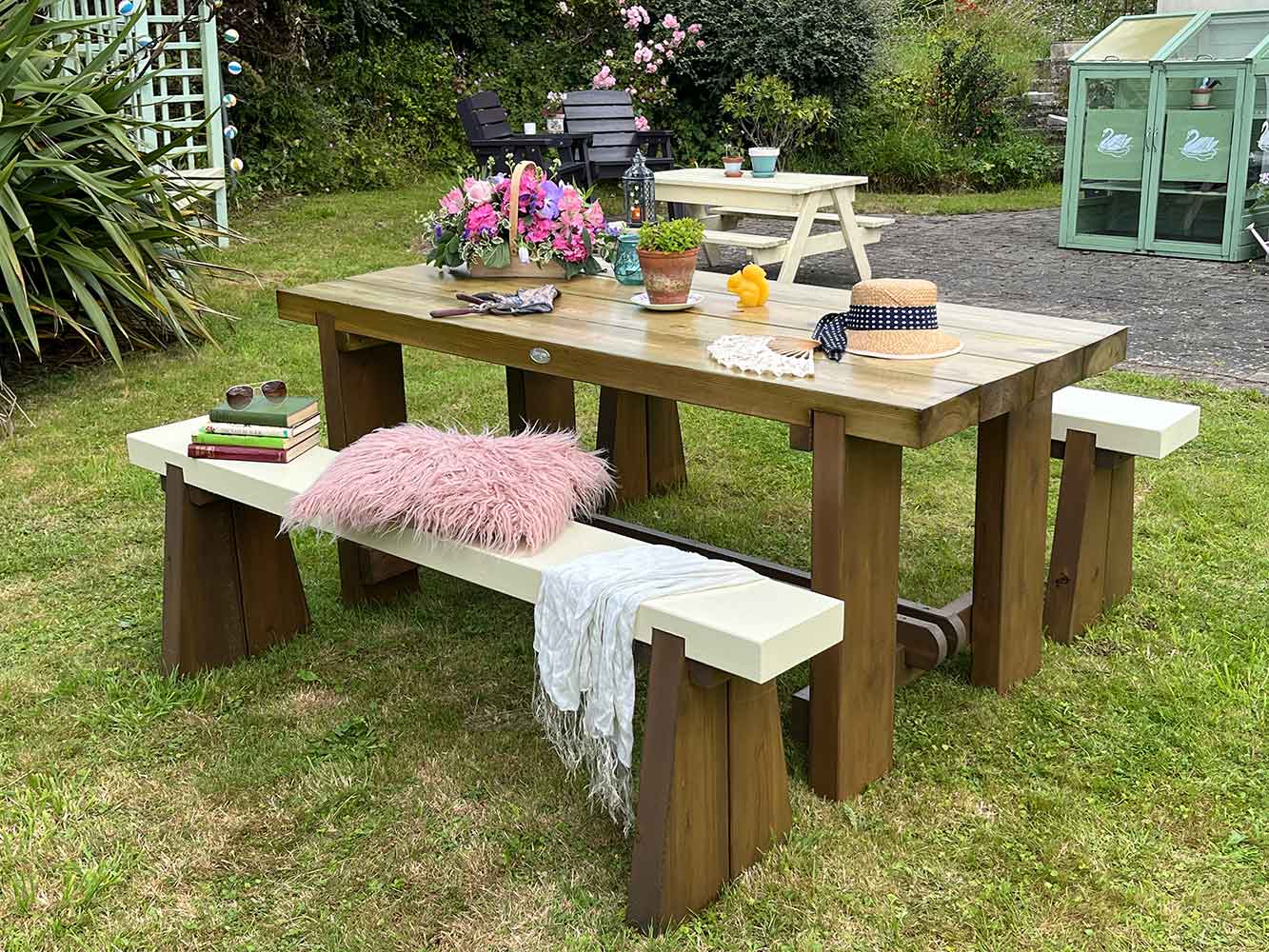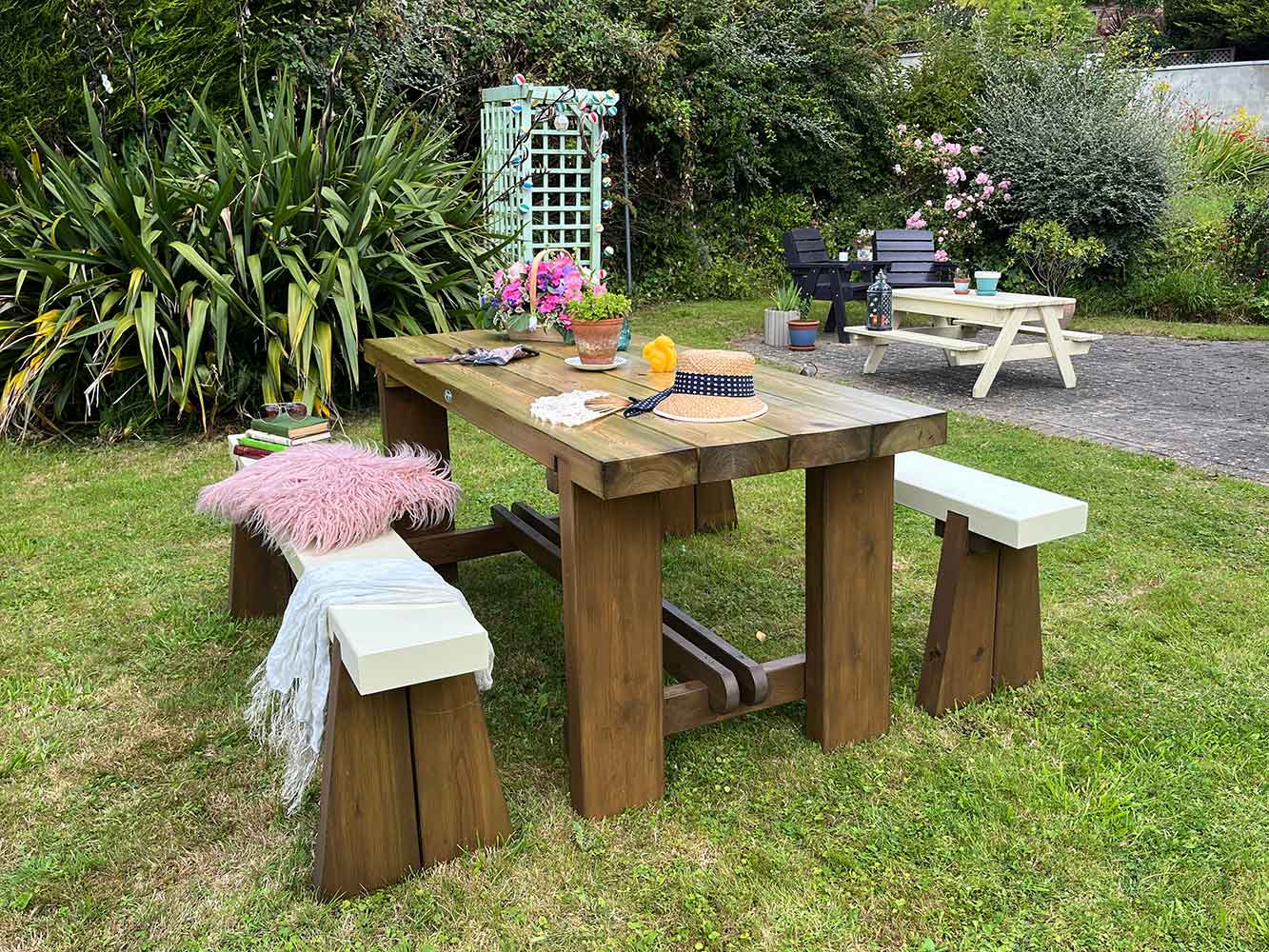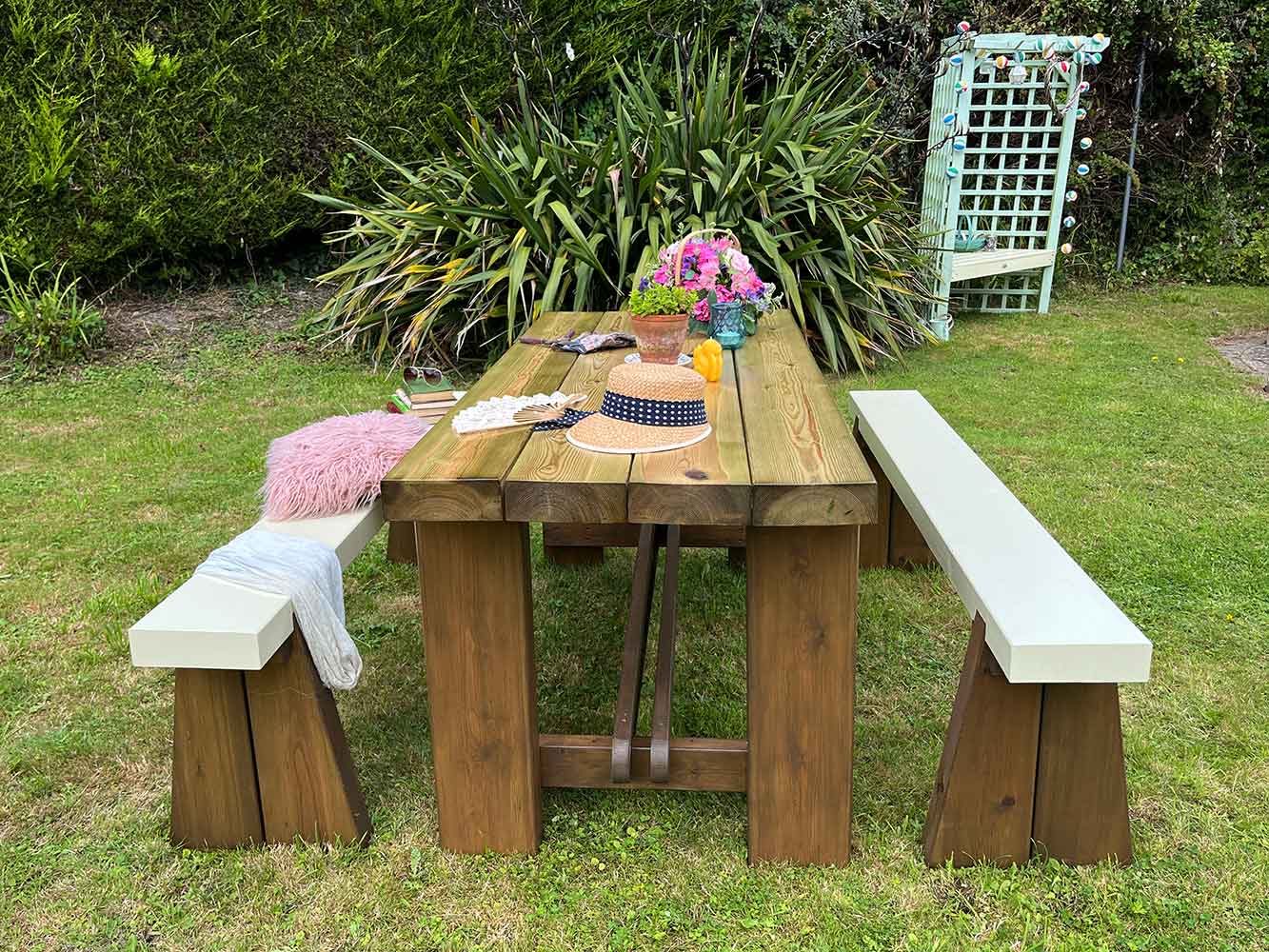painting Timber garden Dining Set
Guide to Painting Timber Garden Dining Set with Thorndown
In this project we’re going to show you step by step how to paint and protect timber garden furniture with our high-performance exterior Wood Paint.
This Hutton Melrose Dining Set is made up of a large table and 2 benches. It’s been left to dry so all the moisture from the timber and preservative treatment has come out and dried. If the moisture content in the timber is too high (>20%) the paint won’t bond and fix properly to the surface, which can lead to problems with the coating like peeling.
You also need to let the preservative chemicals come out as they leave a green salty residue on the surface that the paint will stick to instead of the timber, so gently remove any residue with sandpaper prior to painting, making sure not to breathe in any of the particles.
Our Wood Paint coating is microporous so it allows some moisture to transfer out, dealing with smaller amounts of internal moisture.
This Hutton Melrose Dining Set is made from really good quality sustainably sourced softwood timber in their factory in Gloucestershire. The pressure treatment used in this timber protects against rot and insect attack for 15 years but it needs protecting from the outside elements.
Wood is a natural product and will absorb water from rain that can warp and split wood as it expands and contracts. Water will also stain and discolour the wood.
Use a good quality exterior wood paint such as Thorndown and maintain when required so it looks great and lasts for decades.
If the furniture is made of softwood that has not been treated with pressure-treatment or preservative chemicals then you’ll need to paint on 2 coats of Thorndown Wood Preserver first to protect against rot. Hardwood has natural protection against rot so you wouldn’t need to worry if it was made of oak, teak or any other hardwood.
PAINTING
The first thing to do is to make sure you are wearing DIY clothes that you don’t mind getting paint on, and put down protective sheets to stop paint spills or splatters from staining other surfaces.
With Thorndown Wood Paint you only need 2 coats for full exterior protection, unless it’s a horizontal surface or very exposed, in which case you should apply 3 to 4 coats.
When you love the natural colour of the timber you can protect it using Thorndown UV Clear.
UV rays from the sun will age and grey the timber. The UV blockers in UV Clear will slow down the aging process caused by the sun’s rays so you have the fresh timber look for much longer.
Over time the UV blockers will fade in their strength so if you put a maintenance coat on every year or two then it will prolong the protection and original colour for a few years.
However, you can’t totally stop aging from happening so eventually you will need to switch to a coloured translucent wood paint or opaque colour.
With UV Clear we always recommend 3 to 4 coats as unlike with a coloured paint, when you’re painting you can’t see if any parts of the coating are thin or if you’ve completely missed sections, so 3 to 4 coats will make sure it’s all totally covered.
As a rule of thumb the more coats you put on the thicker the coating and the longer it will take to wear down.
GETTING STARTED
As usual mix well before and during use with a proper paint stirrer. You need a wide surface area to properly mix all of the ingredients together much as you would when mixing a cake.
Paint stirrers are really cheap and you can get wood or plastic ones like the one in the picture above. What I like about the plastic one is that if I wash it once I’ve finished stirring, you can get rid of all the paint and it’s as good as new again so you won’t get any old bits of paint dropping into fresh paint the next time you use it.
All of Thorndown’s paints are water-based so you can clean all paint wet equipment just with water or use a spot of detergent as well if required.
You can use a good quality synthetic paint brush or a roller with a medium or smooth pile sleeve. You can also use a sprayer with our paints but I like to use a brush.
Paint on going along the surface with the grain covering a whole stretch at a time so you get a nice smooth patch free coating.
Make sure you get into all of the grooves and fully coat the sides as well. Leave to dry for 30 minutes to an hour then apply your next coat.
If you’re painting outside then make sure rain isn’t forecast for 24 hours or it can damage the coating before it’s fully fixed and begun curing.
When you’re painting inside then you don’t need to worry about the weather and as our paints have virtually no odour you won’t have any problems with fumes or strong smells.
Don’t forget to paint the underneath of your table to stop moisture from getting in. Two coats will protect it for up to 10 years when you should do a maintenance coat.
You can use our Coverage Calculator to work out how much paint you need and try samples in different paint colours to make sure you love your colour choice.
TOP TIP
Wipe the rim of the tin when you’ve finished painting otherwise if there’s lots of paint on it when you seal it shut, the lid will stick to the tin and you can damage and bend the lid when trying to prise it back off again.
ASH WOOD PAINT
I’ve chosen Thorndown Ash Wood Paint for the legs of the table and benches for a lovely natural colour that will protect and enhance the original timber.
With translucent Wood Paints your application technique has to be the same as if you were using a wood stain. You can see our video guide on painting translucent wood tones for tips and advice.
As always mix the paint well then apply a small amount to a brush or roller, then spread out well along the wood working into the grain.
If you overload the brush or roller you can get thick ugly splodges much as if you were putting on fake tan.
We raised the pieces we painted because otherwise when you’re painting you can get paint on the sheet and if left to dry, it will stick to the sheet then when you pull it off it can damage the coating, which you’d then need to sand and re-paint.
Make sure the surfaces are clean and dry then get painting.
Don’t forget to put a few coats on the feet as they will be standing on the cold wet floor, often in sitting water so they need a good amount of protection.
Cut ends soak up a lot more paint than a smooth planed surface so you can load a bit more onto the brush.
It’s easier to paint it first then assemble it, then after construction just touch-up if you need. Or leave the final coat until after you’ve assembled it.
If it’s pre-assembled and light enough, then flip it over and start on the bottom first, applying a coat then turning over to paint the top and addressing any drips before they dry.
If you like the look of just one coat of the Ash translucent wood paint then you can apply a coat or 2 of UV Clear over the top for full exterior protection.
Below is an image where I’ve painted 2 coats on the right leg section and 1 coat on the left leg to show how the colour gets darker the more coats you apply.
PRIME
I wanted to paint the bench tops in Doulting Stone Wood Paint to add a lovely contrast to the natural wood finishes and to give it a bit of a country cottage look.
With fresh timber and light paint colours you may want to use a Stain Blocking Primer.
Knot resin and tannins from timber can come out over the course of the years, staining paint coatings. If you want to stop it then apply 1-2 coats of Stain Blocking Primer before painting.
Thorndown’s Stain Blocking Primer comes in Clear, White, Grey and Black so I’m using White as it’s the best match for the Doulting Stone paint colour.
With the seating surfaces they’re horizontal so three coats of paint would be best to provide greater protection from beating rain, sitting water, ice and bottoms that will wear a paint coating quicker.
But as I’ll be applying Stain Blocking Primer I’ll only need 2 coats of the wood paint.
As always paint entire sections in one go so you’re always painting up to still wet paint, avoiding dry paint line marks and patches, painting with the grain.
The above pictures on the right show 1 coat of White Stain Blocking Primer painted onto the bench seating.
PAINT
Once the stain blocking primer is dry (about 30 minutes to 1 hour depending on temperature) paint on the top coats of Doulting Stone Wood Paint.
The images above show from left to right:
- 2 coats of White Stain Blocking Primer on the bench seating top
- 1 coat of Doulting Stone painted directly onto the underside of the bench seating on the right compared to bench top on left with top coat of Doulting Stone Wood Paint on top of White Stain Blocking Primer
- Images on right show 2 coats of Doulting Stone Wood Paint on top of White Stain Blocking Primer
CONSTRUCTING
When it’s all painted and dried, leave for 24 hours for the paint to fully fix then construct it, touching up if required.
If it’s already constructed then leave it for 24 hours before sitting on or putting anything on the table top to allow some time for the curing process where the paint coating hardens into a wonderfully water-repellent, durable and long-lasting protective coating.
The construction of this Hutton Melrose Dining Set was very quick and simple, and in no time we had a beautiful dining set to enjoy with al fresco evening meals, gardening breaks, socialising and relaxing in the sun!
VIDEO
Here is a video showing you how to complete this project all the way fro prep to painting to party!
RE-CAP
Tabletop:
3 coats of UV Clear Wood Paint on top with 2 coats underneath
Table & Bench Legs:
2 coats of Ash Wood Paint
Bench Seats:
2 coats of White Stain Blocking Primer & 2 coats of Doulting Stone Wood Paint on bench seating tops
2 coats of Doulting Stone with no Stain Blocking Primer on undersides of benches
DESIGN IDEAS FOR YOUR GARDEN FURNITURE
You can download our simple pdf guide to painting garden furniture here Thorndown Painting Garden Furniture Advice
For inspiration and other colour ideas on painting garden furniture and garden design tricks, visit our Garden Furniture section in Projects.

